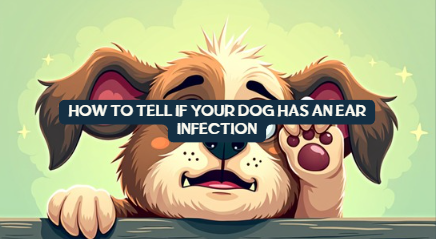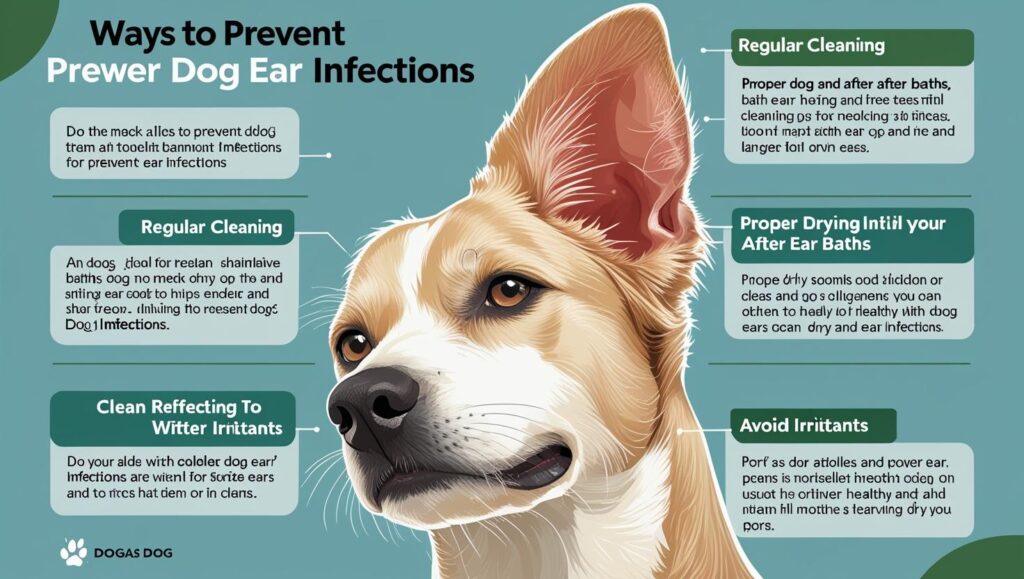Ear infections are one of the most common health problems seen in dogs. Whether you’re a new pet owner or a seasoned dog lover, recognizing the signs of a dog ear infection early can prevent serious complications. In this detailed guide, we’ll explore how to identify the symptoms, causes, and when to seek veterinary help if you suspect your furry friend is suffering from a dog ear infection.
What Is a Dog Ear Infection?
A dog ear infection is an inflammation of the ear canal that can affect the outer ear (otitis externa), middle ear (otitis media), or inner ear (otitis interna). Most cases begin as outer ear infections and can progress if left untreated.
There are three primary types of ear infection in dogs:
- Otitis Externa – Affects the external ear canal (most common)
- Otitis Media – Affects the middle ear
- Otitis Interna – Affects the inner ear and can be more severe
Why Do Dogs Get Ear Infections?
A dog ear infection can be triggered by multiple factors, such as:
- Moisture in the ears (common in dogs who swim or bathe frequently)
- Allergies, including food or environmental allergies
- Ear mites, particularly in puppies
- Bacteria or yeast overgrowth
- Foreign objects like grass seeds
- Injuries or scratches
- Excessive wax buildup
- Hormonal imbalances or autoimmune diseases
Dogs with floppy ears, such as Cocker Spaniels and Basset Hounds, are more prone to dog ear infections due to limited air circulation.

Common Signs of a Dog Ear Infection
So, how can you tell if your pup has a your dog’s ear issue? Watch for these symptoms:
1. Head Shaking and Tilting
Frequent head shaking or a persistent tilt to one side can be a strong indicator of a the infection. This is often your dog’s way of trying to relieve the irritation or pain.
2. Scratching at the Ear
If your dog keeps pawing or scratching their ear excessively, it’s a sign something is bothering them. This is one of the most obvious signs of a the infection.
3. Foul Odor from the Ear
A strong, unpleasant smell coming from your dog’s ear is another red flag. This odor often indicates bacteria or yeast growth, both of which are associated with a dog ear infection.
4. Redness or Swelling
Check the inside of your dog’s ear. If it appears red, swollen, or inflamed, it’s likely they’re suffering from a infection.
5. Discharge or Fluid
Yellow, brown, or bloody discharge from the ear is a classic sign of a infection. The texture may be thick or watery, depending on the cause.
6. Loss of Balance or Coordination
A infection, especially if it spreads to the inner ear, can affect your dog’s balance. If your dog seems unsteady or has difficulty walking, it may be time for a vet visit.
7. Hearing Loss
Temporary hearing loss is also possible with a severe the infection. If your dog doesn’t respond to commands or noises like usual, an infection might be affecting their hearing.
How Vets Diagnose Dog Ear Infections
If you suspect your dog has a canine ear infection, schedule a vet appointment. Your veterinarian will perform:
- A physical examination of the ear
- Use of an otoscope to view the ear canal and eardrum
- Swab tests to check for bacteria, yeast, or mites
- Possibly imaging if the infection is severe or has spread
Accurate diagnosis is essential to properly treat a canine ear infection and prevent it from recurring.

Treatment Options for Dog Ear Infections
Treatment for a canine ear infection depends on the cause and severity:
1. Cleaning the Ear
Your vet will often clean your dog’s ear to remove debris, wax, and discharge. Never use cotton swabs at home, as this can push debris further into the canal.
2. Medicated Drops
Antibiotic, antifungal, or anti-inflammatory ear drops are commonly prescribed. These are specifically designed to treat bacterial or yeast infections causing the dog ear infection.
3. Oral Medications
In more severe cases or when the middle or inner ear is involved, your vet may prescribe oral antibiotics or anti-inflammatories.
4. Surgery (Rare Cases)
In chronic or resistant canine ear infection, surgery may be needed to remove damaged tissue or open the ear canal for better airflow.

Can Dog Ear Infections Be Prevented?
While not all dog ear infections can be avoided, you can take steps to reduce the risk:
- Clean your dog’s ears regularly, using a vet-approved solution
- Dry your dog’s ears thoroughly after swimming or baths
- Manage allergies with vet guidance
- Groom regularly, especially around the ears
- Schedule routine checkups to catch early signs
Home Care Tips for Dog Ear Infections
If your vet confirms a dog ear infection, follow these care tips:
- Complete the full course of treatment (even if symptoms improve early)
- Avoid water in the ears during the healing period
- Check both ears, even if only one seems infected
- Don’t use human medications—some are toxic to dogs
- Follow up with your vet if symptoms don’t improve within 7–10 days
When to See a Vet Immediately
Seek urgent vet care for a dog ear infection if you notice:
- Persistent vomiting
- Walking in circles
- Seizures
- Severe head tilt
- Sudden deafness
These could indicate that the infection has spread deeper into the ear, affecting the nervous system or brain.
Dog Breeds Prone to Ear Infections
Certain breeds are genetically more prone to dog ear infections, especially those with:
- Floppy ears (e.g., Cocker Spaniel, Basset Hound)
- Hairy ear canals (e.g., Poodles, Shih Tzus)
- Allergy-prone skin (e.g., Golden Retrievers, Bulldogs)
Extra ear care is vital for these dogs to avoid recurring dog ear infections.
A dog ear infection is more than just a minor annoyance—it can lead to pain, hearing loss, and long-term damage if untreated. The good news is, with regular checks and prompt care, most dog ear infections can be treated effectively.
By staying alert to the signs—such as scratching, odor, redness, and discharge—you can catch a dog ear infection early and help your furry friend recover quickly.